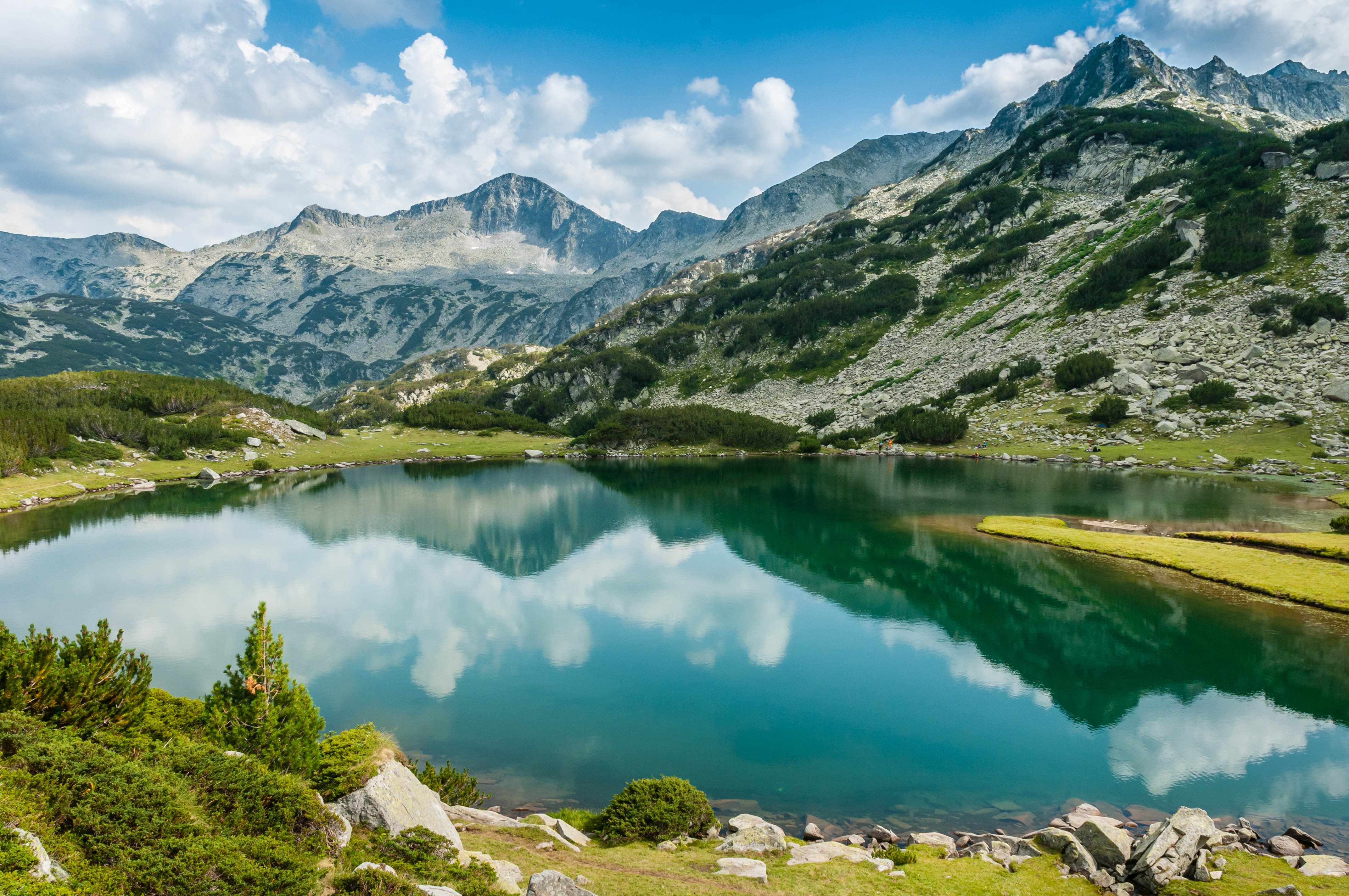Penny Walker travelled on our 'Bulgaria - Flowers of the Balkans' holiday and submitted this entry to our writing competition.
Pirin National Park, Bulgaria
We’re keen independent walkers, but for a holiday in three mountain areas of Bulgaria we’re so pleased we went in a small, friendly group with two expert guides, Vlado and Andrew.
We knew we were in a completely different place when we reached our first hotel, in the midst of the extensive woods of Vitosha National Park and with a view over Lake Studena. Originally a hunting lodge for communist leaders, it was very spacious, and the hall and dining room were decked rather gruesomely with a wild boar’s head and numerous deer skulls with antlers. Each of the downstairs bedrooms still had a gun cupboard (empty)! Wandering outside by ourselves, we found a huge flowering Philadelphus alive with hundreds of Marbled White butterflies, and not far away we were fascinated to watch a young woodpecker being fed beakfuls of the butterflies by its parent.
The next day’s outing was typical: in an attractive river valley there were so many plants in flower that we could hardly keep up with all the names, as well as trying to identify new butterflies and birds. After an ample picnic on the river bank, we moved on to another quiet country road where Vlado knew there was a rare species of orchid. In third area he showed us many more flowers, including a dark red knapweed, Centaurea immanuelis-loewii, a species found only in Greece and Bulgaria and listed as ‘vulnerable’ because populations are fragmenting. While we were here, we heard a strange bird calling which Andrew told us was a Corncrake – really exciting as it was the first time we’d ever heard it.
On the drive south to our second hotel, we visited the remarkable Rila Monastery where a few buildings survive from the early 14th century. However, most are from the mid-19th century, and the site is described as a masterpiece of Bulgarian National Revival architecture.
We loved the Pirin Mountains National Park where we had glimpses up to the bare marble top of the highest mountain (2,900 metres). Again, we revelled in the rich variety of flowers, including bright groups of gentians and orchids, and the interesting insect visitors on some of them. With Andrew’s help, we enjoyed watching a Nutcracker, and other birds. Early next morning, when we looked out of the hotel window in Bansko, we saw several elderly women picking wild flowers on the unused area below. Vlado explained that it was ‘Enyovden’ (herb day), when certain flowers are thought to be especially potent, especially those picked at sunrise. Our second day in the Pirin Mountains was very rewarding. Starting at the chalet at 2,000 metres, we climbed upwards on a rough track, and eventually reached a wide vista: mountains above us and a wide stream rushing through the rocks, with a wooden bridge for walkers – a perfect place for group photos (these would be very suitable for adverts for Tilley hats!). We eventually reached about 2,200 metres where we saw plants typical of the high alpine zone, before we descended.
Driving next day to the Rhodope Mountains in the south, we passed through villages with storks on nests and feeding in the fields. At a stop to enjoy a flower-filled meadow we heard quail, then saw them flying. Also here, I had the memorable experience of a butterfly sitting on my hand for almost 5 minutes while I walked. Andrew said it was a Glanville Fritillary, and he also identified a rare copper butterfly and a Chimney Sweeper moth (completely black) – all firsts for us.
Before we visited the Trigrad Gorge, Vlado had heard that a Wallcreeper had been seen near the entrance. As we approached, we saw a man with huge camera who told us that he and his guide had been there for 3 hours, but without a sighting of the bird. On cue, it appeared on the rock above us, creeping up a slit, then flew over our heads to do the same on the rock at the other side. Its red patches were clearly visible. We were all thrilled.
Other highlights in the gorge were the waterfalls dropping down into Haramiyska Cave where evidence of Neolithic culture has been found. On the damp rocks were patches of purple-flowered Haberlea rhodopensis which is endemic in the Rhodope Mountains and a few other mountains in Bulgaria and Greece. Also, on a small area of flat land was a plot of cultivated Sideritis scardia, with yellow flowers – interesting because its leaves are used to make the herbal tea we’d enjoyed at several places.
At the end of the guided trip, we added two days in Sofia where we learnt much more about Bulgaria’s history and culture. Altogether a memorable holiday.
Read more about our 'Bulgaria - Flowers of the Balkans' holiday.



 Loading search...
Loading search...
